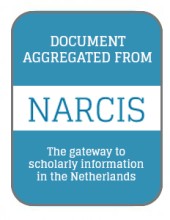Land Library
Welcome to the Land Portal Library. Explore our vast collection of open-access resources (over 74,000) including reports, journal articles, research papers, peer-reviewed publications, legal documents, videos and much more.
/ library resources
Showing items 1 through 9 of 587.The main objective of this Economic and Sector Work (ESW) is to identify opportunities for stronger linkages between domestic agricultural supply chains and the tourism sector in the OECS, and to outline priority interventions with potential to strengthen these linkages.
The Netherlands is an important actor in the floriculture sector worldwide. Many Dutch flower companies have in recent years established businesses in the Global South as a result of favourable climatic conditions, available land and water resources, and the presence of cheap labour.
A spatially explicit land use change model is typically based on the assumption that the relationship between land use change and its explanatory processes is stationary.
This report focuses on areas with highest potential efficiency gains to increase the value for money from investments in core public goods and services such as extension, irrigation and rural roads.
Recent surveys show considerable progress in maternal and child health in Ethiopia. The improvement has been in health outcomes and health services coverage. The study examines how different groups have fared in this progress.
This note aims to provide information and analysis as a basis for a better understanding of the challenges and constraints of achieving gender equality in Bolivia, with a special focus on the intersectionality between gender and ethnicity.
This report is about Energy sector in Romania which is responsible for 58 percent of the country’s GHG emissions (except Land use, land-use change and forestry (LULUCF)), and is therefore critical for mitigation.
This report is about Romanis's Green growth benchmarking, which is a country-level diagnostic that helps define a country’s strengths and vulnerabilities in adopting a path to greener growth.
This report is about forests that provide a substantial contribution to mitigation in Romania by sequestering carbon, helping to counter carbon emissions from other sectors in the economy.









